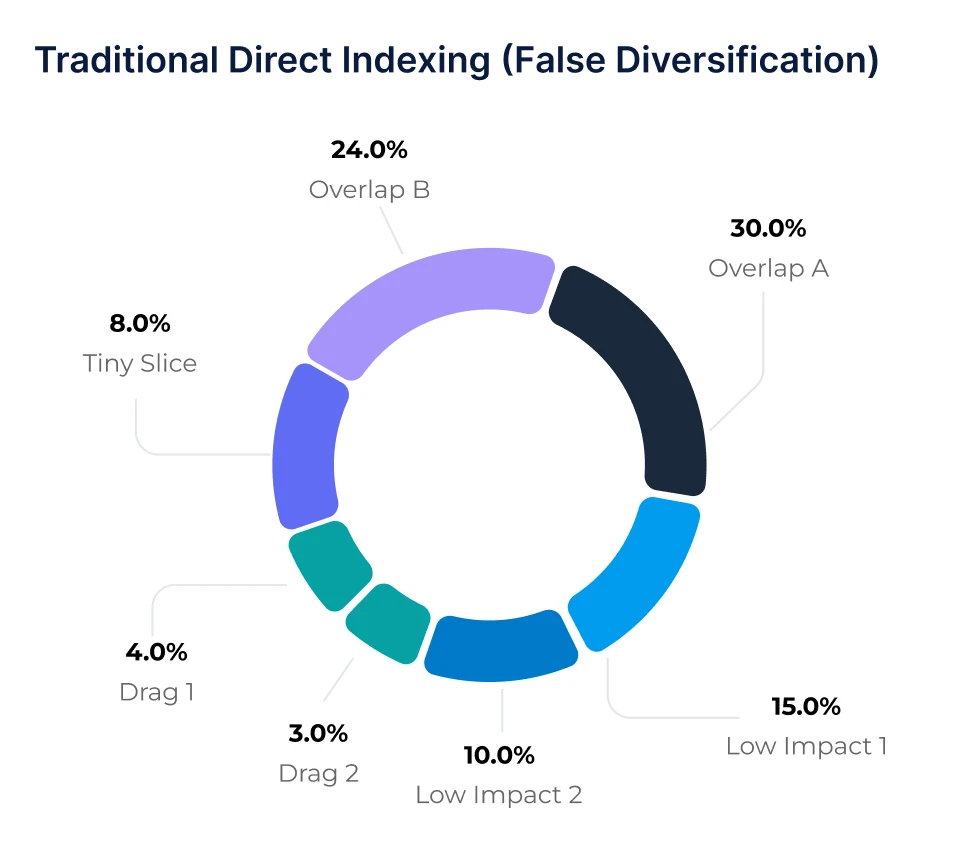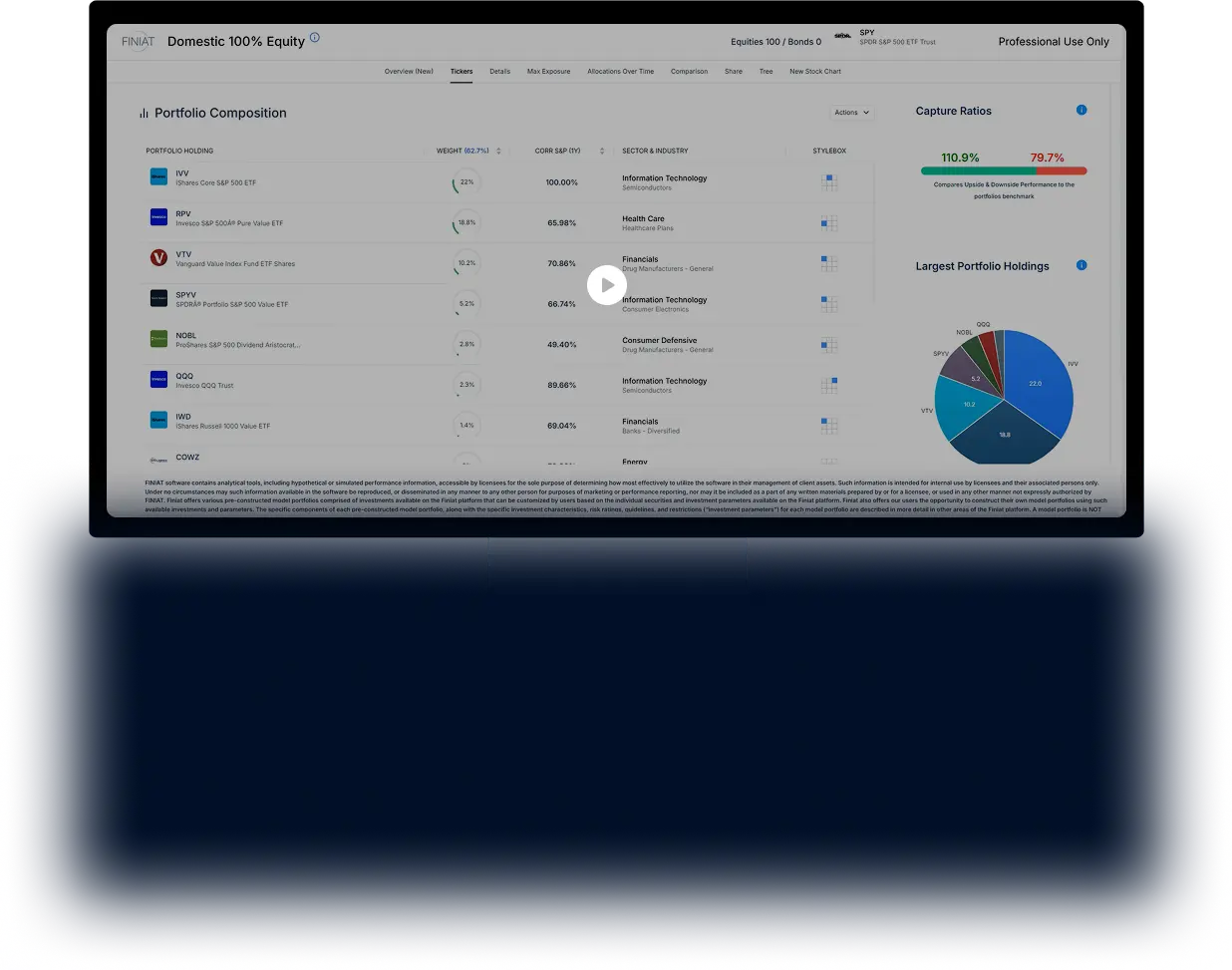A New Frontier in Personalized Investing
Intelligent Indexing lets advisors replicate ETFs or entire ETF portfolios within separately managed accounts (SMAs) creating a more efficient, flexible, and customizable alternative to static direct indexing.
The Limitations of Traditional Direct Indexing
Broad Benchmarks = Shallow Personalization

How Intelligent Indexing Works
Comparison of Investment Strategies
Advisor Advantages
For advisors, FINIAT eliminates the complexity and tedious nature of portfolio customization and offers a scalable solution to address portfolio over-concentration, particularly when single-stock exposures dominate a client’s balance sheet. With automation driving both personalization and tax-smart efficiency, advisors can meet rising expectations at scale while focusing more on relationships and planning.
A Better Client Experience

A Better Client Experience
Intelligent Indexing works alongside Intelligent Allocation and AI Insights to deliver the only end-to-end platform designed to scale personalization, streamline advisor workflows, & strengthen client trust.
FINIAT’s Intelligent Indexing transforms direct indexing from a rigid benchmark replica into a flexible, automated, client-first solution. It balances personalization, efficiency, and scalability giving advisors the tools to deliver better outcomes & stronger connections with every client.
Frequently Asked Questions
Don’t see the answer you’re looking for? Get in touch.

